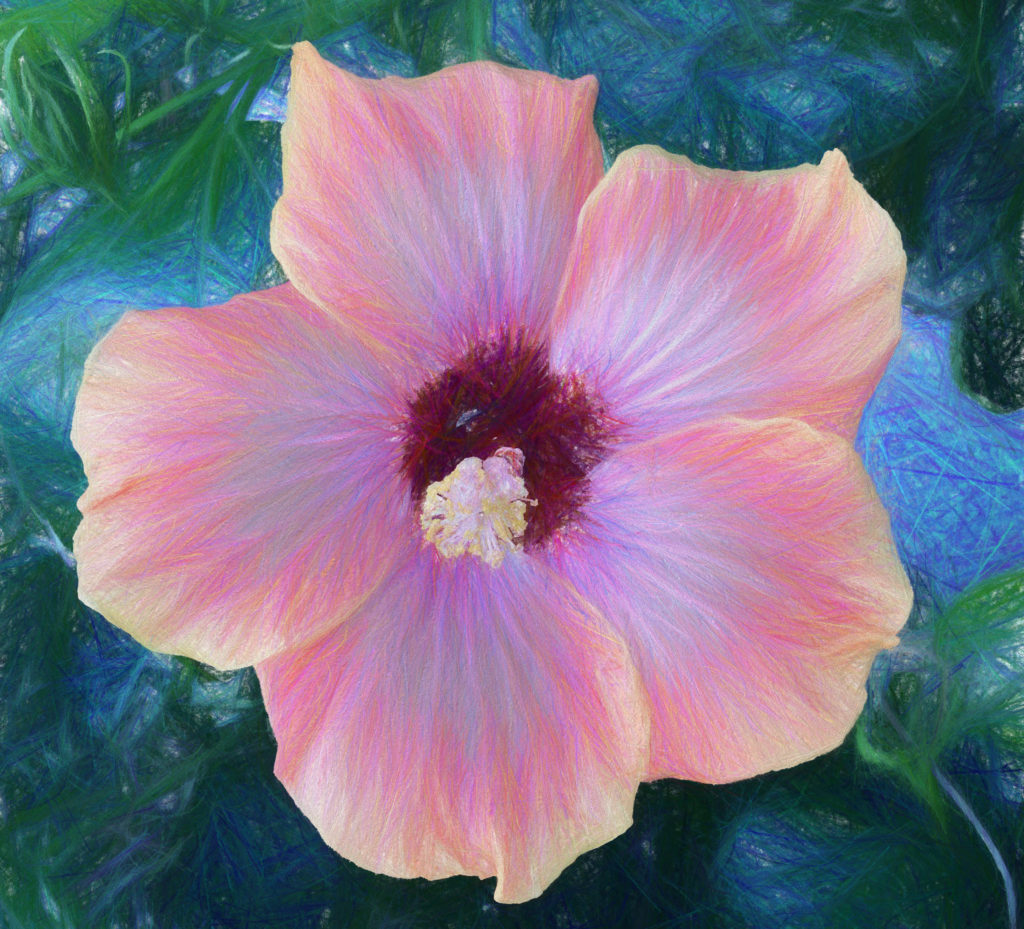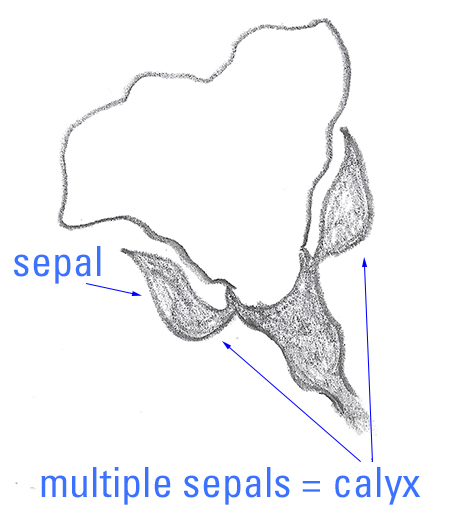
Hibiscus L.
Hibiscus (Plantae, Malvales, Malvaceae, Malvoideae, Hibisceae, Hibiscus L.).

Can you believe that there are approximately 679 species of Hibiscus? Wow! Hibiscus are tropical deciduous shrubs/trees that can grow as big as 15-18 feet tall with 3-8 inch diameter flowers. Typical flower colors range from white, yellow, peach, orange, red, and purple. Hummingbirds and butterflies are attracted to these flowers.
Habitat/Growing Information.
Hibiscus are a tropical plant–loves heat, moisture (not “wet & soggy”), and full sun (certain species can still thrive in part-sun and part-shade). Hardiness zones 9-11 work well for this plant. They like 1″ of rain per week, but the soil (preferably loamy, or a good potting mix if planted in containers) should be well-drained. They can be grown in a pot as well. For planting in the ground, give each plant about 3-6 feet of space.
Hibiscus do well in a tropical climate or one that “mimics” a tropical climate. Temperatures ranging from 60-85 degrees F are great, but they will need protection if the temperatures dip below 32 degrees F. If they’re planted in a pot, that’s the time to take them inside.
Hibiscus are a type of plant that needs extra nutrients in order for them to bloom. A high-potassium fertilizer in the summer as a diluted liquid fertilizer once a week or a slow-release fertilizer once a month is appropriate. You don’t need fertilizer in the winter.
For information on propagating Hibiscus, www.gardeningknowhow.com (listed in the references) has a great article which includes tips on how to propagate from cuttings vs. seed.
Natural pests include aphids, mealybugs, white flies, thrips, gall midge, spider mites, and hibiscus beetle. Some of these insects will cause the bud to die/fall off before being able to bloom. You can use sticky traps and some organic control methods to try control infestation.
Some popular species to try grow at home include: Hibiscus sabdariffa (red flowers cultivated for many uses), Hibiscus rosa-sinensis Linn, Hibiscus sinensis, & Hibiscus rosa-sinensis.
Parts utilized.
The hibiscus flower petals, calyces, and leaves are harvested for a variety of uses including teas (“sour tea” for its tart taste) and topical applications. The petals make a lovely red tea color but oftentimes the calyces will be the main ingredient of herbal teas. Hibiscus-ginger is a popular tea blend.
Side Note. Let’s digress into a bit of botany. A sepal is the outermost protective part of a flower/bud. Multiple sepals = calyx. The plural of calyx is calyces. See the figure below.

Properties.
Traditionally, Hibiscus have been used for: antioxidant; GI distress; hypertension; fever; bacterial infection; antimicrobial properties; inflammation; constipation; cold symptoms; insomnia; contraceptic; diuretic; cough; nerve diseases; cardiac issues; attenuating/modulating blood lipids, and attenuating/modulating blood sugar (Khristi & Patel, 2016; Herranz-López et al., 2017; Lyu et al., 2020). The red Hibiscus rosa sinensis L. (aka red Hibiscus) and Hibiscus sabdariffa are favored in herbal medicine.
Red Hibiscus studies have shown that the following phytochemicals present are (but not limited to): tannins; flavonoids; steroids; alkaloids; saponins; phenols; and proanthocyanidin (Khristi & Patel, 2016). Cyanidin-3,5-diglucoside, cyanidin-3-sophoroside-5-glucoside, quercetin-3-diglucoside, cyclopeptide alkaloid, cyanidin chloride, quercetin, hentriacontaine, riboflavin, ascorbic acid, and thiamine were so found in red Hibiscus (Khristi & Patel, 2016; Herranz-López et al., 2017).
Hibiscus petals were found to contain (but not limited to): cyanidin diglucoside; flavonoids; thiamine; riboflavin; niacin; and ascorbic acid. Leaves and stems were found to contain (but not limited to): beta-sitosterol; stigmasterol; taraxeryl acetate; and 3 cyclopropane compounds (Khristi & Patel, 2016).
Lyu et al. (2020) studied the phenolic compounds in Hibiscus sabdariffa and found neochlorogenic acid, cryptochlorogenic acid, rutin, rutin isomer, isoquercitin, kaempferol-3-O-rutinoside, kaempferol-3-O-glucoside, quercetin, quercetin isomer, and kaempferol. Phenolic and polyphenolic compounds help protect the body from oxidative stress.
References
- https://garden.org/plants/group/hibiscus/
- https://www.gardeningknowhow.com/ornamental/flowers/hibiscus/how-to-care-for-hibiscus-plants.htm
- https://www.thespruce.com/caring-for-hibiscus-847914
- https://www.youtube.com/watch?v=3WC4VeLzeUk
- https://youtu.be/kSxRXhcm1Hw
- https://youtu.be/aghIPzQxPvw
- https://youtu.be/zjXAnxMy-Sg
- https://youtu.be/bl1hhp3ADx0
- https://en.wikipedia.org/wiki/Hibiscus
- https://www.healthline.com/health/all-you-need-to-know-hibiscus#1
- Khristi, V., & Patel, V. H. (2016). Therapeutic Potential of Hibiscus Rosa Sinensis: A Review. International Journal of Nutrition and Dietetics, 4(2), 105-123.
- Herranz-López, M., Olivares-Vicente, M., Encinar, J. A., Barrajón-Catalán, E., Segura-Carretero, A., Joven, J., & Micol, V. (2017). Multi-targeted molecular effects of Hibiscus sabdariffa polyphenols: an opportunity for a global approach to obesity. Nutrients, 9(8), 907.
- Lyu, J. I., Kim, J. M., Kim, D. G., Kim, J. B., Kim, S. H., Ahn, J. W., … & Kwon, S. J. (2020). Phenolic Compound Content of Leaf Extracts from Different Roselle (Hibiscus sabdariffa) Accessions. Plant Breeding and Biotechnology, 8(1), 1-10.
